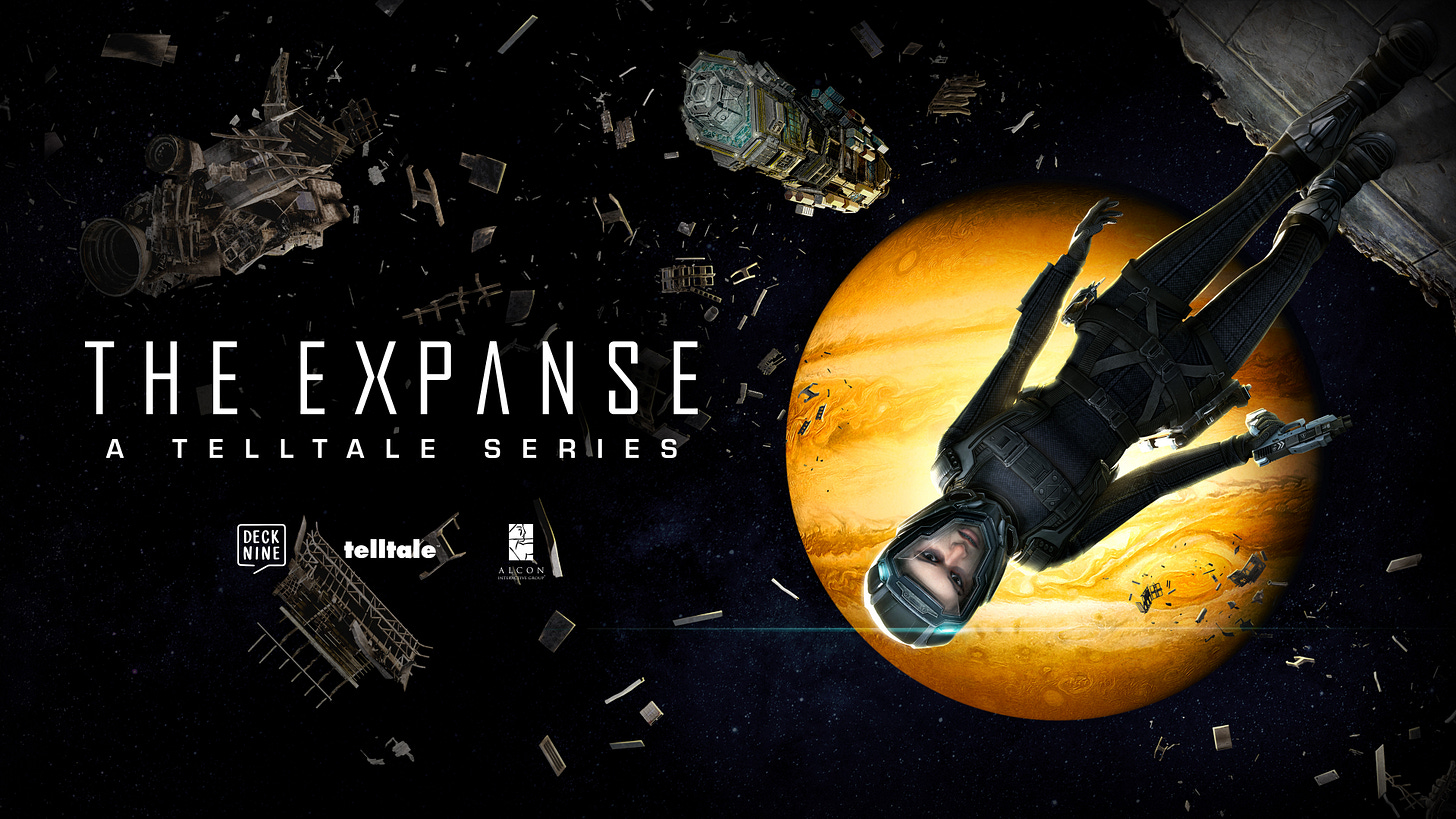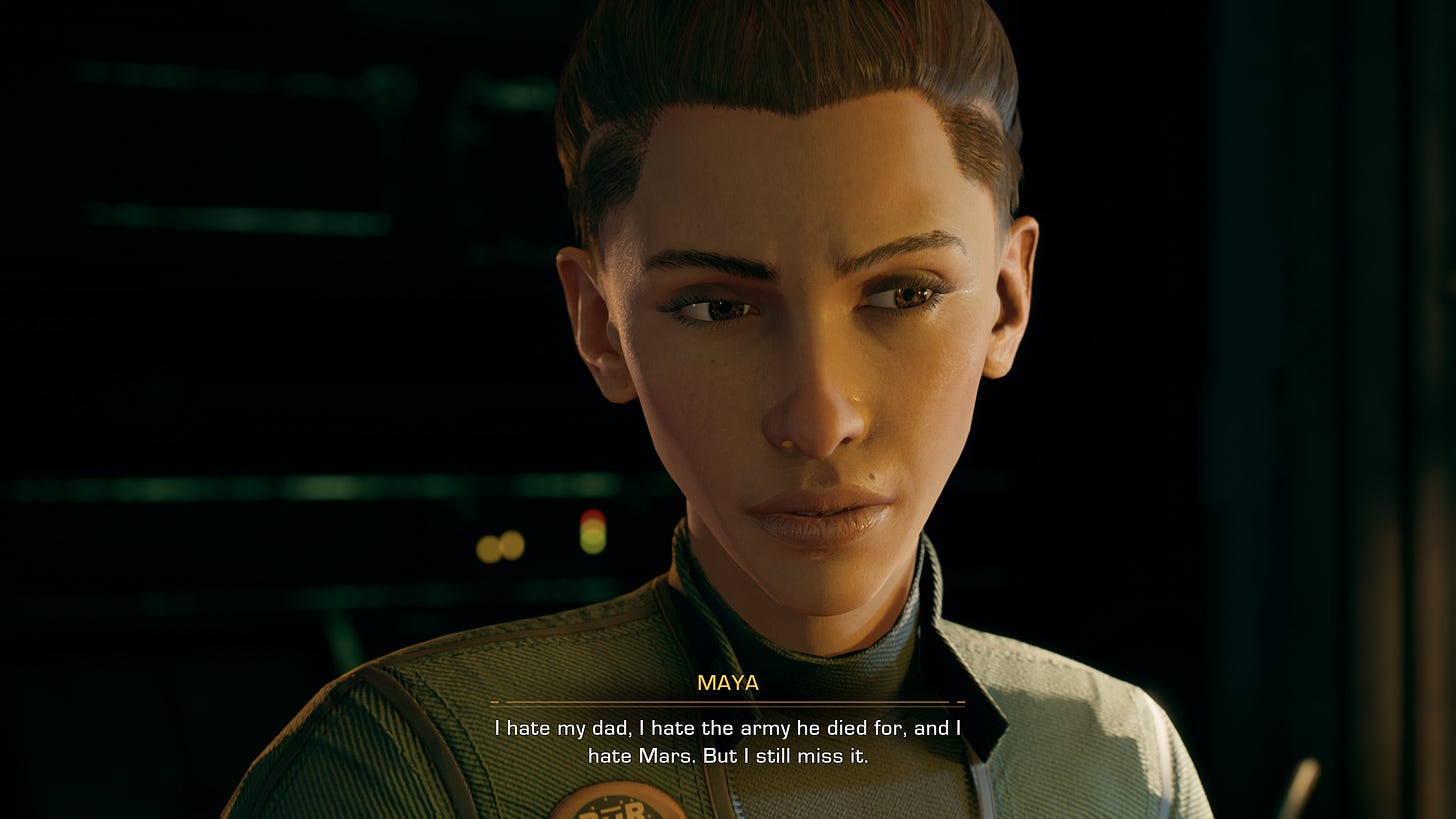The Expanse: A Telltale Series — A Belter Story
Review
I started following The Expanse right after the outrage when it was cancelled on SyFy, and I started reading the books soon after. I also followed the show on Amazon Prime until the finale, even though I enjoyed the SyFy seasons more. My favourite character throughout the series was Camina Drummer, played by Cara Gee. Since the announcement of The Expanse: A Telltale Series, I have been waiting patiently for the opportunity to review it, and I will assume that readers will be at least familiar with The Expanse rather than entirely new to it. It’s a review, not a lore dump.
This is the first new game from Telltale Games since its closure in 2018, and it’s good to know that they also intend to release The Wolf Among Us 2 next year. The Walking Dead and The Wolf Among Us are my favourite Telltale games, and The Expanse caters to fandoms of existing IPs similarly, building on them to create stories to be cherished more than consumed and discarded.
Not all games released by Telltale in the past decade received critical and commercial acclaim; the developer spread itself thin. The new direction made it possible to build on the established structure of episodic adventure games with simple, solid gameplay mechanics. The Expanse: A Telltale Series is also a collaboration with Deck Nine, developers of Life is Strange spin-offs Before the Storm and True Colors.
Crew and Score
The first scene in Episode 1: Archer’s Paradox foreshadows the last decision that will impact the subsequent episodes. It also works to introduce the very Belter practice of spacing: executing people by throwing them out of the airlock. Also known as the Thrown Out the Airlock trope, a staple in several genres of space fiction. It’s a good narrative device to introduce the characters you will interact with.
Camina Drummer is aboard the Artemis, a scavenging ship looking for a big score in the outer regions of the Belt. She is the executive officer, or XO in Expanse parlance, under a captain called Garrison Cox, a former U.N.N. grunt and Inner, or Earther. Her crewmates include a pair of Belter twins, Rayen and Arlen, Khan, a cranky Inner pilot, Virgil, an Inner medic, and Maya, a Martian mechanic and potential love interest.
Gravity Mechanics
The low-g and magboots mechanics felt more developed than I expected for a Telltale game. At first, the magboots landing animation feels like a superhero move. Then it wears off and becomes normal, as Belters probably feel about it. It’s just part of living in space and low-G environments. Humans adapt to a lot in The Expanse, and gravity is central to this adaptation for Belters and Inners alike. The game respects that.
The quick-time sequences are another story. It feels like a basic cost-cutting implementation of action sequences that add very little to the story or the gameplay. As a player, I just go through the motions with QTEs in order to move on to the next gameplay sequence, cutscene, or dialogue. I don’t think I’ve ever met gamers who actually enjoy QTE gameplay, no matter how pervasive it is on PlayStation games.
Pixel Hunt in Space
The Episode 2: Hunting Grounds features a rather saccharine Martian ballad that ties into events later, or at least it did in my first playthrough. Martian music in the books is described as descended from Texan colonies, hence Martians with Texan accents in the show, like the pilot Alex Kamal. But I thought that the extended sequence playing the song was a bit too country for my taste.
The space exploration sequences rely on collectathons for some narrative devices and conversations with the crew. These sections feel less than meaningful. In my first playthrough, I missed quite a few interactions in the second episode, not only because of my choices, but because I didn’t know there was more to explore and collect. The game assumes that you will be floating around and looking everywhere, but there is only a quest marker for the main objective, and sometimes you can’t backtrack later.
Choices & Consequences
In the Episode 3: First Ones, the relationship between Camina and Maya feels respectful to LGBT women, though I have no idea how authentic it is. I suppose that the way they like to wrestle for fun and the way Camina can choose to be professional and maintain rank feels more authentic than the flirting scenes in themselves. I tried to stay professional in my first playthrough, though I regretted it later.
Episode 4: Impossible Objects sets up a gut punch that I saw coming based on my choices, though not the way it happened. I know it can be undone, but I stuck with my choices to see where they would go (and I lost the chance to reload). The game accommodates the ‘bad’ choices as much as the ‘good’ ones, and the player has to live with them. It makes you curious to see what other choices lead to.
Voices in the Void
For the most part, the writing is solid; no fluff. It feels like “working class science fiction,” as the writers put it in the books. Toussaint is a compelling antagonist in Episode 5: Europa’s Folly, and the voice actor had chemistry with Cara Gee. The animation is fluid and simple, fully capturing Cara Gee’s hard-to-read demeanour, in her expressions more than her words. It might not be the most advanced motion capture in the industry, but it is an expressive achievement in its simplicity.
One issue I had was that you can’t interact with an interactable if you’re in a voice call with someone, and sometimes they come at the wrong time. The keyboard and mouse controls were fussy sometimes, but it was fun to float around in space and go through ship debris and ruins. This is what the worldbuilding of the Expanse excels in, making the solar system feel lived-in and full of secrets and possibilities.
Oye Beltalowda
This is a Belter story in a Belter universe. Earth and Mars are part of the story, but they are not as central as they are in the show and the books. This means that Telltale is going for a detailed view of the Belter universe, rather than an astronomical scale space series with trips to other planets and satellites, and more mechanics tacked on. Instead, this is a tight, packed-in, short game that introduces the Belters in all their cultural complexity with little exposition in dialogue.
Some unintuitive mechanics and design do not water down how much fun I had playing The Expanse: A Telltale Series. Both to existing fans and newcomers, it offers the experience of being in that world, where humans spread across the solar system and develop different cultures in Mars and the Asteroid Belt. It might not be exactly the game that The Expanse fans expected, but it’s a solid first season.
Disclosure: The Expanse: A Telltale Series was reviewed on PC with an Epic Games Store key provided by the publisher over the course of 15 hours of playtime. All screenshots attached were captured during the review process.
Rating: 7.5 / Decent.
The Good
Cara Gee;
Simple but effective animation and mechanics;
Good introduction to the Expanse worldbuilding;
Fun spacesuit and magboots gameplay.
The Bad
Some interactions hinge on collectathons;
QTE gameplay sections can be tedious;
Some messy interactions during dialogue.
Gallery









The Expanse: A Telltale Series is available on Epic Games Store, Xbox, and PlayStation. More information is available on the official website.






